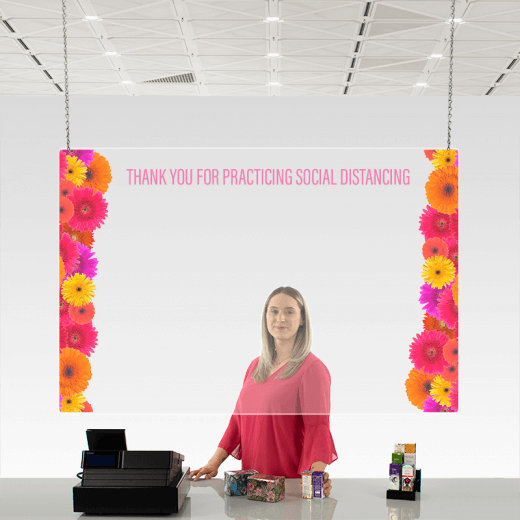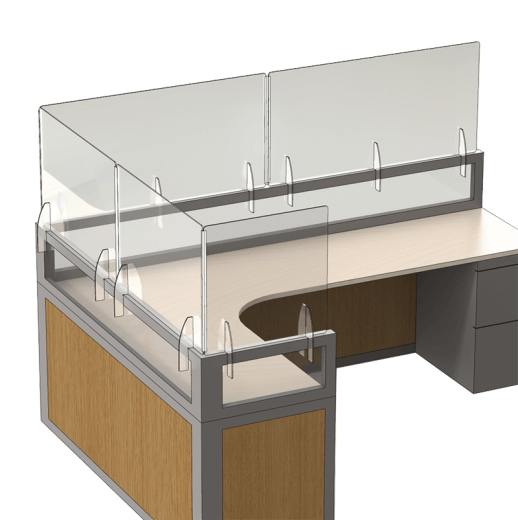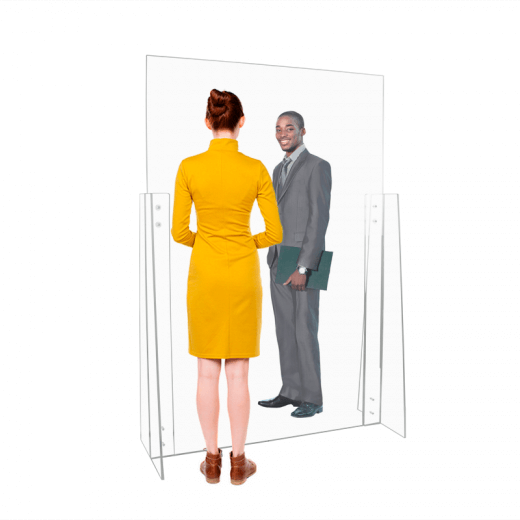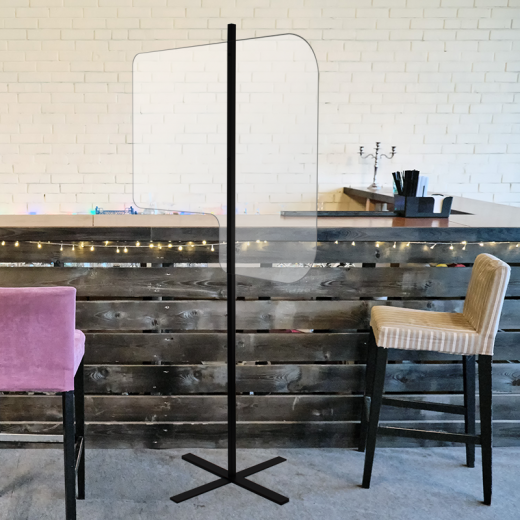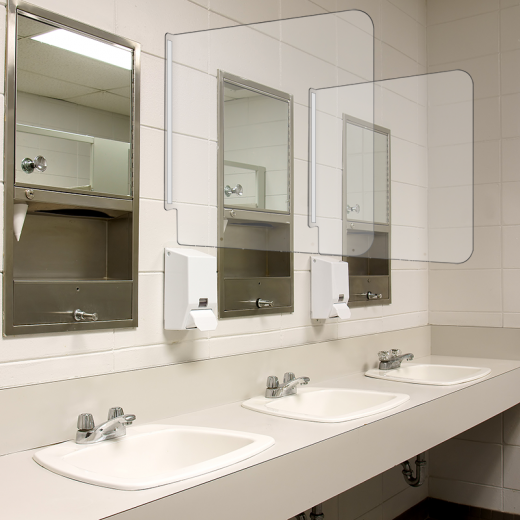As employees return to the office, health and safety have become a top priority, specifically when it comes to colds and viruses. Unfortunately, if you’ve ever worked in an office, you know they have their fair share of germ zones—doorknobs, water cooler buttons, the coffee maker handle; it’s a list that seems to have grown longer with a pandemic. The good news is, alongside upgraded sanitization practices, office sneeze guards are a great way to minimize the spread of germs and viruses.
Don’t think your office needs them? Consider this. A cough can travel up to 50 miles per hour and disperse up to 3,000 virus-filled droplets, while a sneeze can travel up to 100 miles per hour and disperse up to 100,000 droplets. While a sneeze guard won’t completely stop all germs expelled into the air, researchers have found barriers to be an important component of safety plans, along with personal protective equipment (PPE), social distancing and other measures to help reduce germ spread.
To help make the back-to-office transition for your employees easier, we break down seven areas in your office where you can use sneeze guards to keep your team safe.
1. Reception Area
The reception desk is often the largest pathway for outside germs. Between deliveries that come to the front door and visitors who arrive for appointments, all pose a virus spread threat to your employees at the front desk.
A hanging sneeze guard or a desk-mounted barrier could help reduce germ spread in your front office area. We would suggest you leave room at the bottom of a hanging sneeze guard for items to be passed back and forth or opt for a desk-mounted barrier designed with an opening at the bottom. This will make things like delivery signatures much easier.
If your reception area is a small, enclosed space, an acrylic partition can help minimize airborne debris when breathing in close proximity to one another or sneezing. We offer free-standing partitions and velcro mount partitions which are both easy to set up.
2. Conference Rooms
For many, the thought of sitting in a large conference room may now seem overwhelming. How many lunches or conferences calls have we all taken while huddled together in a room that’s too small? To help promote social distancing in staff meetings and give your team a sense of ease, acrylic barriers are a great addition to any conference room. You can have a custom-sized modular clear table divider down the middle of a large conference table or install smaller barriers for individual seats at the table.
Many of our sneeze guard systems for conference spaces are easy to install and adjustable to allow you to modify partitions to accommodate different group sizes and needs.
3. Cubicles
If your teams have their own individual cubicle workspaces, you don’t have to change your entire furniture strategy to adapt your office to the new normal. You can easily install frameless cubicle wall extenders to keep your original functionality.
If your team members have a habit of standing at their cubicles and discussing projects over the wall, they can still do so with an acrylic barrier set at the correct height.
In addition, if you have teams that share a cubicle space, you can install a clear polycarbonate individual desk shield divider between workspaces which could help minimize germs or droplets spreading beyond individual employee stations.
4. Open floor plans
Open concept offices have been popular for the last two decades. They allow your teams to brainstorm and collaborate openly as they sit in clusters.
But with the need to keep people distanced, your open layout might need some adjustment.
One way to maintain that collaborative feel is to use a floor-standing room divider to create partitions between clusters of desks. In addition, you can use cubicle extenders and table partitions to create barriers between people within a cluster.
In some instances, if your team sits in rows, you can eliminate seats between two employees and use the empty space to construct a barrier as well.
It’s also a good idea to encourage your teams to book conference rooms with barriers installed in them. The more space your team is able to utilize, the better.
5. The executive suite
Your company leaders may have their own isolated spaces, but just like those who work in your reception area, it’s important to keep them safe when visitors enter their offices.
If an executive has a single office, a hanging or desk-mounted partition between him or her and the person entering the room could minimize germ contact from outside sources.
You may even need to situate a second desk in an executive office to assure the barrier is properly placed between the person and whoever enters. And if your executive suite has its own receptionist station, that space should be fitted with acrylic barriers as well.
6. The Kitchen or Cafeteria
As we mentioned earlier, things like the water cooler and coffee maker are prime locations for germs. But your team needs to eat and they certainly need coffee.
Standing barriers can be a great way to divide up a kitchen and standing bar counter dividers help create space without being too intrusive.
If your office includes a cafeteria, make sure there is a barrier in front of the registers. Hanging barriers or the velcro partitions mentioned above are easy ways to protect the cashiers.
7. Restrooms
Restrooms are a haven for germs and they are also one of the most frequented (and smallest) parts of the office.
One of the most obvious ways to enhance restroom safety is by adding barriers between sinks. Restroom sink partitions can be easily mounted to the wall and they take up almost no space.
We also offer urinal or stall door extenders to ensure the barrier is high enough between individuals.
Wrapping it up
Office sneeze guards could help you minimize the spread of germs in your office. They don’t, however, take the place of other CDC recommendations for offices and other work environments.
Along with your acrylic barriers, it’s important to maintain sound hygiene and cleaning practices. Remember to wear a well-fitted mask and maintain appropriate social distance as much as possible in areas without a barrier.
It also helps to make sure your office is properly ventilated and has fresh air entering throughout the day. And if you need help redesigning your office floor plan with sneeze guard barriers in the right places, contact a shopPOPdisplays expert to help you create spaces that serve your staff’s work and safety needs.


